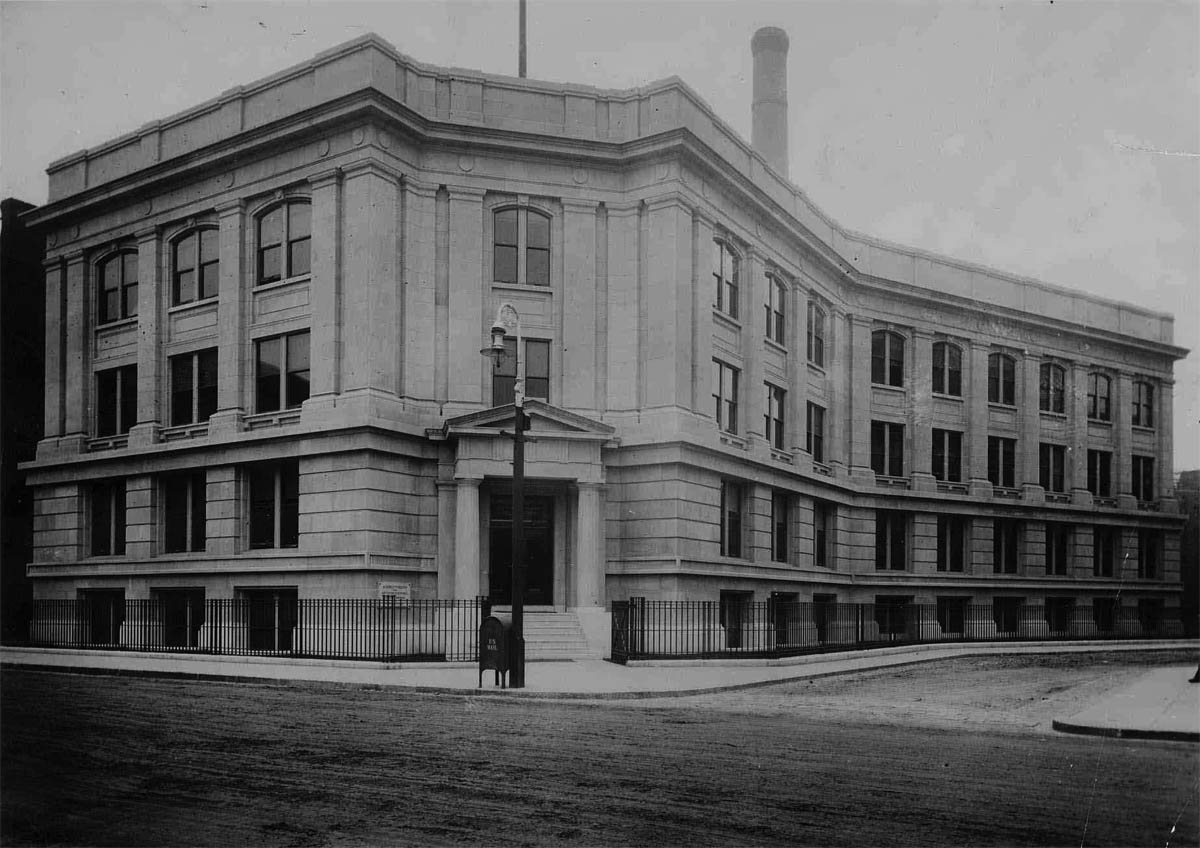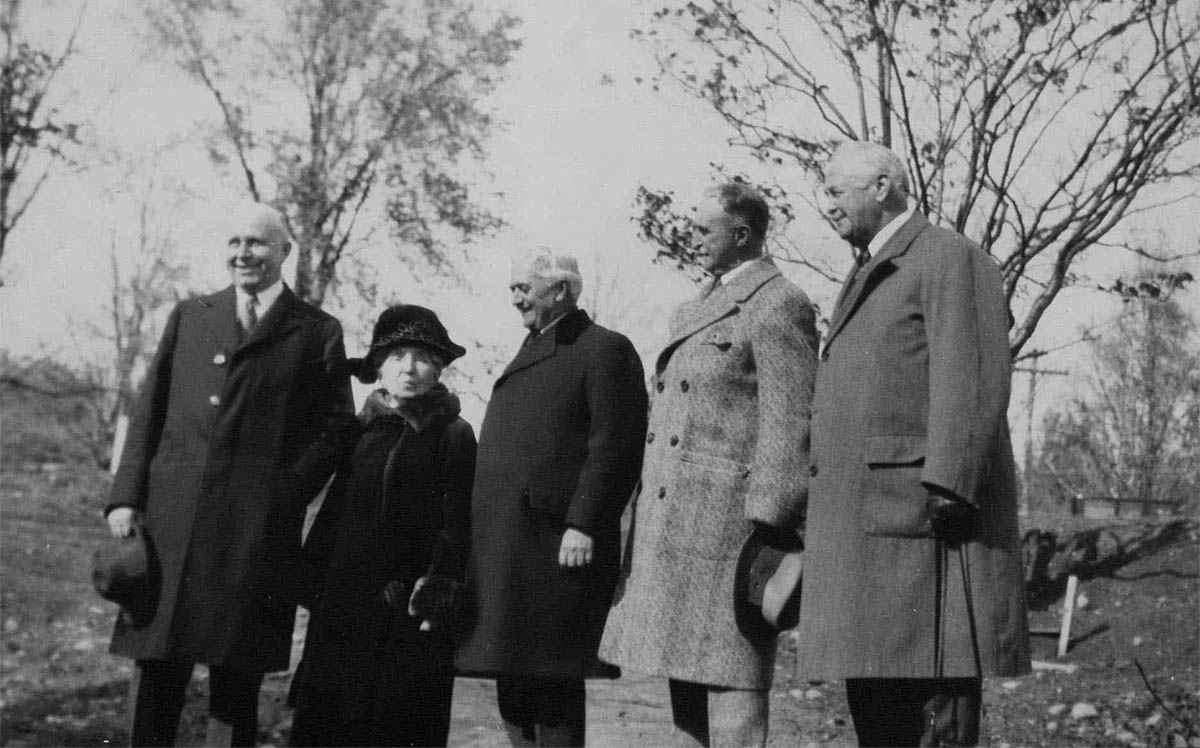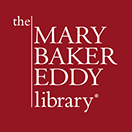Women of History: Lucia C. Warren

Lucia Warren’s signature is a familiar sight among the Library’s archival records. Source: Lucia C. Warren to Clifford P. Smith, 3 November 1933, Subject File, Lucia C. Warren – Papers – Warren Family.
Since 2002 The Mary Baker Eddy Library has managed public access to the archives of The Mother Church (The First Church of Christ, Scientist). But collecting and preserving papers and objects associated with Mary Baker Eddy and the history of the Christian Science movement began over a hundred years ago. In the effort to document Christian Science history, many previously unsung women have played central roles. One was Lucia Crisola Warren (1883–1936), whose archival work spanned three decades.
She was born on September 22, 1883, in Georgia, Vermont, the eldest daughter of Jere Calvin Warren and Mary Wait Warren. According to Lucia Warren, her mother “had always been an earnest student of the Bible and she read it more or less literally, and thus she felt that followers of Christ Jesus should do healing work through prayer.”1 Mary Warren’s introduction to Christian Science came through a cousin, and soon afterward the family was reading Christian Science literature.
At some point Mary Warren reached out to Mary Baker Eddy, requesting that a teacher of Christian Science be sent to Vermont. Eddy’s student Julia S. Bartlett made the journey in April 1887. She gave instruction on how to practice the Science to the Warren family and Mary Warren’s sister and brother-in-law, as well as to another couple in their circle.2
At her 1902 graduation from St. Albans High School, Warren delivered an essay, “The Tyranny of Custom.” At that time she also won a literary prize, although we don’t know whether or not it was for the essay.3 That same month she joined The Mother Church. She went on to attend the University of Vermont, where she was involved in Christian Science activities on the campus.4
In 1907 Warren moved to Boston, where she found employment at The Mother Church in the Office of the Clerk, which was headed up by William B. Johnson, a member of the Christian Science Board of Directors. Initially she was filling a temporary position, with duties relating to the admission of new members in the month of June. But soon she was working in a permanent position. It was there that she first became involved in the activity of preserving church records, creating indexes for correspondence, old record books, and letter copy books.5 At this time, the church and Eddy were undergoing the challenges of the Next Friends lawsuit, an attempt to delegitimize Eddy’s authority.
Good recordkeeping of current and historical documents is essential when preparing for litigation. So it’s not surprising that under the direction of William Lyman Johnson, the son of the Clerk, Warren “began to mount Mrs. Eddy’s letters…in the ledger books,” by encapsulating letters in celluloid sheets. Then in 1909 the indexing of these letters was cut short, when John V. Dittemore replaced Johnson on the Board of Directors and as Clerk.6

The former Christian Science Publishing Society building at 107 Falmouth Street. The church Directors worked here in early 1915, when Warren was managing the silking project with the Emery Record Preserving Company. Photograph c. 1908. Unknown Photographer. P04247.
Upheaval came to the Clerk’s office under Dittemore. New secretaries in the office began to undo the indexing work Warren and her co-workers had begun under Johnson, in favor of systems Dittemore preferred. In a 1933 account of the historical work done at The Mother Church, Warren explained how in 1915 Dittemore employed the Emery Record Preserving Company in the preservation of Eddy’s letters. When Dittemore learned of Warren’s previous mounting work, he put the management of the project under her direction.7
Emery used a process known as “silking.” Letters and articles written by Eddy and by her secretaries were placed under silk, in order to strengthen and preserve the paper for longer periods of time. While this method is no longer the industry standard, the Mary Baker Eddy Collection contains numerous documents that underwent the process.
In overseeing this project, Warren worked with Dittemore and the other Directors to transfer papers and materials from Eddy’s final residence in Chestnut Hill, Massachusetts, to the care of The Mother Church.8 She considered this to be the point when “the collecting of historical data for The Mother Church really began.” In addition to the internal transfer of papers within the organization, Dittemore also worked with Allan A. Beauchamp, a historical manuscripts dealer, to locate and purchase other documents relevant to the history of Christian Science.9
In June 1916 Warren became assistant to Charles E. Jarvis, Corresponding Secretary for the Directors. She also continued her work of processing historical materials, although during this time it was not as central a priority in her job.10 Over time she assumed new roles in the Board Office. She became Assistant Corresponding Secretary 1919, and was promoted to Corresponding Secretary in 1924. She became Executive Secretary in 1934.
Dittemore was removed from the Board of Directors in 1919 and broke with The Mother Church. His removal came, in part, after it was discovered that he was improperly handling historical materials, even removing them from the Board office. Despite agreements (and payments) that involved his turning over all removed materials, he continued to improperly possess historical documents until his passing in 1937.11 After his removal, Warren was again directly involved in historical preservation and in more consistent recordkeeping. Another of her major responsibilities was soliciting and collecting reminiscences from individuals who had had connections with Eddy and/or the early Christian Science movement.12 These accounts can be found in the Library’s collections, and many letters to and from Warren are present in the Reminiscence File (LSC009). The Board office also began to collect photographs of early students and officers of the church, as well as histories of Christian Science branch churches, deepening the available knowledge of the wider Christian Science field.

The Christian Science Board of Directors at Eddy’s former residence in Concord, New Hampshire, October 26, 1926. Left to Right: George W. Adams, Annie M. Knott, James A. Neal, William R. Rathvon, Edward A. Merritt. Warren worked under these officers and a number of others. Unknown Photographer. P07838.
In 1932 the Directors established the Bureau of History and Statistics, with the aim of having a department that could ensure Christian Science history was “recorded for posterity,” as well as “accurate and informative.” Judge Clifford P. Smith, a previous editor of The Mother Church’s religious publications, was named head of the new department. At first it was mainly in charge of publishing historical information, with Warren continuing the bulk of preservation and research work within the Directors’ office. But soon she began coordinating transfer of the work so that it resided totally within the Bureau of History and Statistics, which eventually was named the Bureau of History and Records.13 By the late 1940s, this department became the Archives of The Mother Church. Numerous individuals have played essential roles in these departments, up to the present day.
Lucia Warren passed away on June 9, 1936. A tribute in The Christian Science Monitor had this to say: “Ceaseless in her activities in behalf of Christian Science and constantly expressing loving kindness to all whom she came in contact, her friendships have extended into many lands.”14 Her work lives on, seen in the many letters and documents archived here at the Library that bear her name—and her historical touch.
Listen to Women of History from the Mary Baker Eddy Library Archives, a Seekers and Scholars podcast episode featuring Library staffers Steve Graham and Dorothy Rivera.
- Lucia C. Warren to Clifford P. Smith, 3 November 1933, Subject File, Lucia C. Warren – Papers – Warren Family.
- Lucia C. Warren to Clifford P. Smith, 3 November 1933; Mary Wait Warren to the Massachusetts Metaphysical College, 8 November 1887, IC972.96.009.
- “School Days Over,” St. Alban’s Daily Messenger, 27 June 1902, 1, 7.
- “Lucia Crisola Warren,” The Christian Science Monitor, 10 June 1936, 6.
- Before the invention of automatic copying machines, people created copies of letters through a number of processes. Some were done by hand or typed, while other copies were created by chemical processes like letterpress copying.
- Lucia C. Warren, “Memorandum from Corresponding Secretary for The Christian Science Board of Directors,” 19 December 1933, Subject File, Lucia C. Warren – Papers – Warren Family, 4.
- See Warren, “Memorandum,” 4–6.
- Many of these papers and books now make up the Mary Baker Eddy Collection, including the Mary Baker Eddy Books, Outgoing Correspondence, and Incoming Correspondence (IC) collections. The IC collection was previously known as the Chestnut Hill File, highlighting this physical connection.
- See Warren, “Memorandum,” 6–8.
- See Warren, “Memorandum,” 8–9.
- For more on Dittemore’s involvement with the Church and its historic materials, read the article “A forensic analysis of Calvin Frye’s diaries” and listen to the podcast “Examining the evidence—forensic handwriting analysis at The Mary Baker Eddy Library.”
- See Warren, “Memorandum,” 11–13.
- See Warren, “Memorandum,” 14–16.
- “Lucia Crisola Warren,” The Christian Science Monitor, 10 June 1936, 6.

